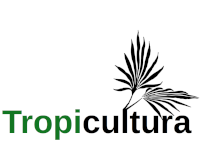Profitability and Technical Efficiency of Soybean Production in Northern Nigeri
Résumé
La rentabilité et l'efficacité technique de la production du soja dans le nord du Nigeria.
Depuis 2008, l'Institut International d'Agriculture Tropicale et ses partenaires ont introduit et diffusé des variétés hâtives de soja chez les agriculteurs des savanes soudaniennes dans le nord du Nigeria. Aucune donnée empirique sur la rentabilité et l'efficacité technique de la production de soja n’est encore disponible d’où l’intérêt de cette étude qui a évalué ces paramètre pour les variétés de soja introduites dans la région. Les échantillons ont été collectés chez neuf cent agriculteurs appartenant à 30 communautés de trois districts de l'État de Kano. La technique du budget partiel et le modèle de frontière de production stochastique ont été utilisés pour analyser les données. Les résultats ont montré que la production de soja était rentable dans les trois districts de l'État de Kano. Les bénéfices et les retours par naira investi les plus élevés ont été obtenus dans la zone de Dawakin-Tofa LGA. Le bénéfice net le plus élevé de 178.613 N178 et le retour par Naira investi le plus important de 2,5 ont été observés dans la zone de Dawakin-Tofa. Le bénéfice net a été de 157,261 N avec un retour de 1,75 par naira investi dans la zone de Shanono. Pour la zone de Bunkure, le bénéfice net était de 143,342 N avec un retour de 1,66 par Naira investi. La moyenne de l'efficience technique était plus élevée chez les agriculteurs de la zone de Dawakin-Tofa LGA (87 %), suivie par ceux de la zone de Bunkure LGA (68%), et afin ceux de la zone de Shanono LGA (59 %). Ces résultats montrent que les agriculteurs peuvent améliorer leur marge bénéficiaire, compte tenu du niveau actuel des ressources disponibles. La production peut augmenter à court terme avec une marge bénéficiaire de 13%, 32 % et 41 % respectivement dans les zones de Shanono, Bunkure et Dawakin-Tofa grâce à une amélioration de l’efficience de l’utilisation de leurs ressources. Les facteurs d'efficacité propres aux agriculteurs, qui comprennent l'âge, l'éducation, l'accès au crédit, les contacts de vulgarisation et l'expérience en agriculture, ont été considérés comme les plus importants pour expliquer la variation d'efficacité observée chez les agriculteurs des 3 districts. Il est conseillé que les producteurs de soja par l'intermédiaire des agents de vulgarisation soient encouragés à se conformer strictement aux pratiques recommandées de production du soja afin d'assurer une utilisation efficace de leurs ressources disponibles en améliorant leur efficacité technique et en accroissant leur niveau de profit pour assurer la sécurité alimentaire de leur foyer.
Abstract
The International Institute of Tropical Agriculture and collaborating partners have been introducing and disseminating short season soybean varieties among farm households in the Sudan savannas of Northern Nigeria since 2008. Yet, there is no empirical information on the profitability and technical efficiency of soybean production. This study estimated the profitability and efficiency of production of the early maturing soybean. Nine hundred soybean farming households in thirty communities from three Local Government Areas (LGAs) in Kano State were sampled for the study. Partial budget technique and stochastic frontier production function were used to analyze the data elicited from the sampled farm households. Results from the study established the profitability of soybean production in all the three LGAs of Kano State. The highest profit of N178,613/ha and returns per naira invested of 2.5 respectively was earned by the soybean producing households of Dawakin-Tofa LGA. Net profit was N157,261in Shanono with a returns of 1.75 per naira invested. In Bunkure, net benefit was N143,342 with returns of 1.66 per Naira invested. The mean technical efficiency was highest for the Dawakin-Tofa LGA soybean growing households (87%), followed by Bunkure LGA (68%), and Shanono LGA (59%). This result implies that given the current level of resources available to the soybean producing households, they can increase their soybean output in the short run by a margin 13%, 32% and 41% in Dawakin-Tofa, Bunkure and Shanono LGAs respectively through efficient utilization of their available resources. Farmer-specific efficiency factors, which comprise age, education, access to credit, extension contact and farming experience, were found to be the significant factors that account for the observed variation in efficiency among the farmers in the 3 LGAs. It was recommended that the soybean farmers through the assistance of extension agents should be encouraged to adhere strictly to the recommended soybean production practices towards ensuring efficient utilization of their available resources so that they can improve their technical efficiency and increase their profit level towards enhancing their household food security.

